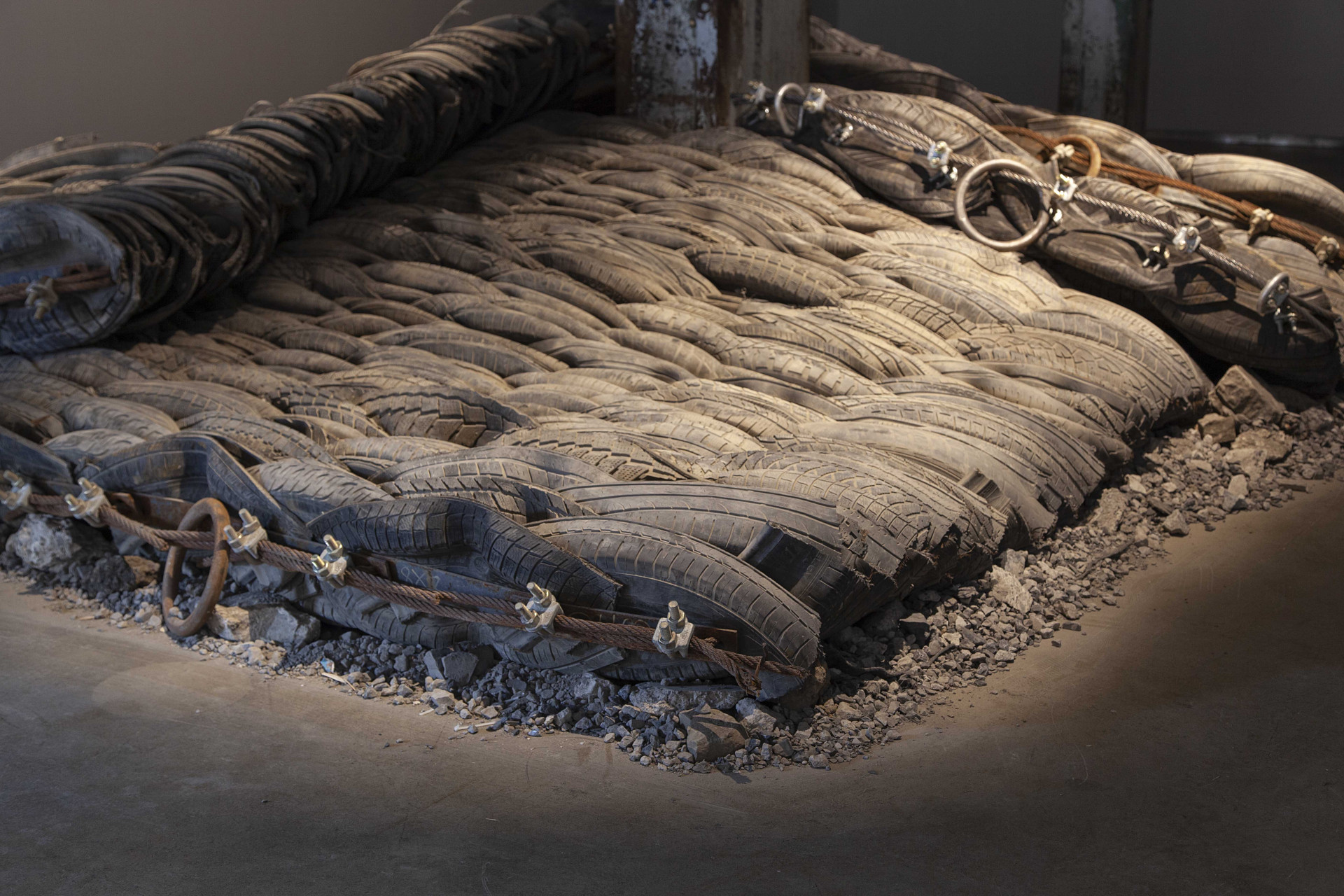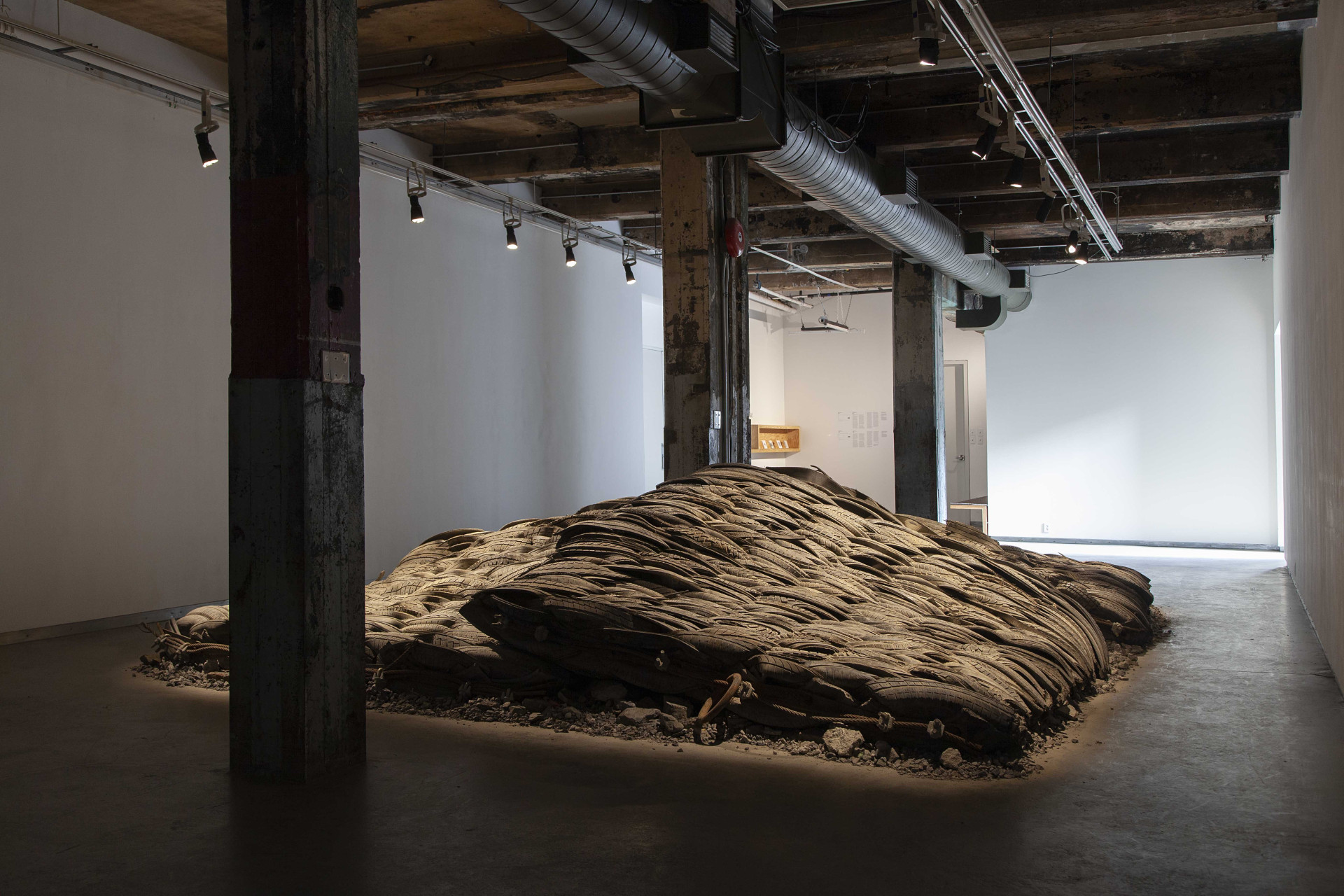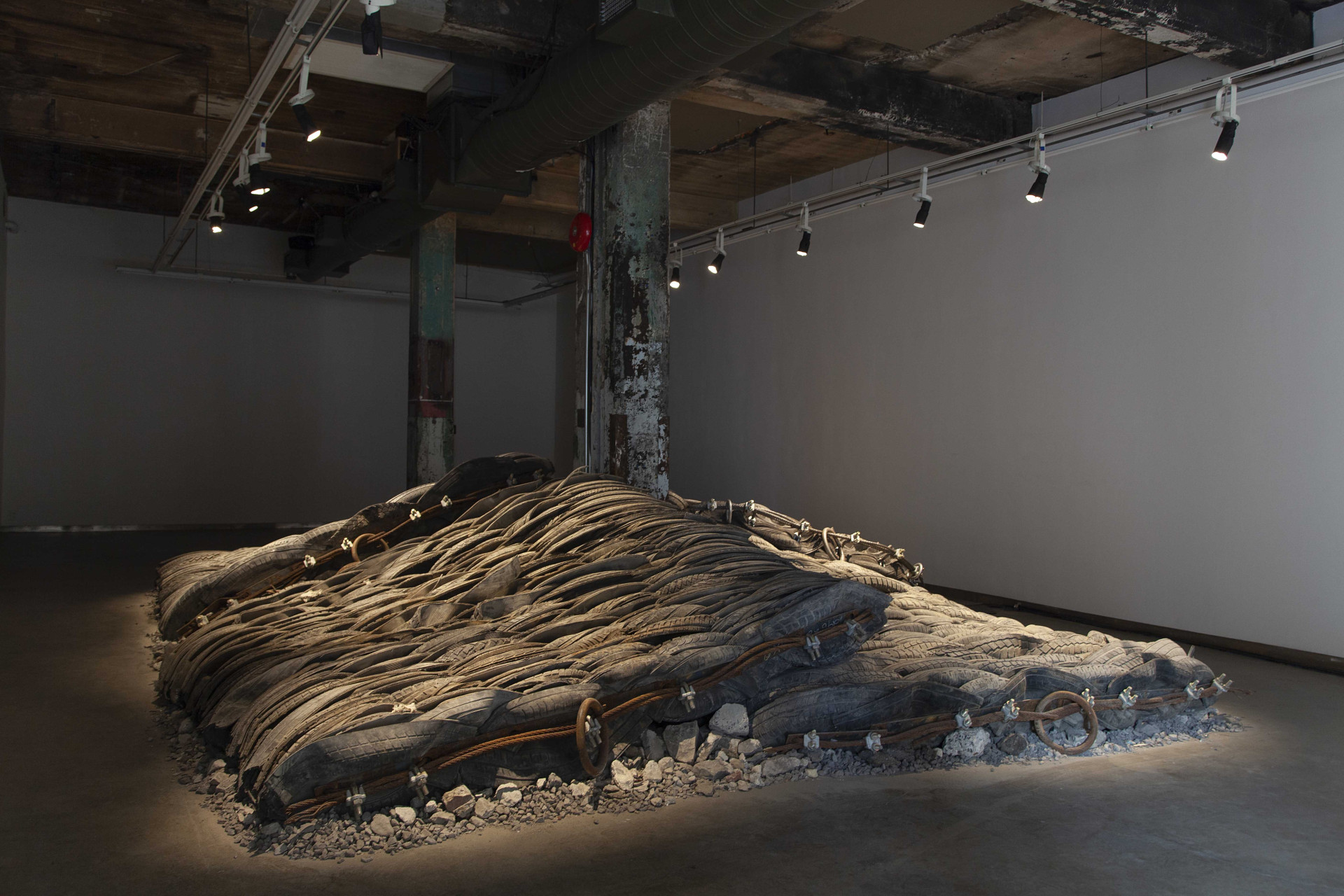


Listening to a Tired Breath
Sound passes through space and through walls; it passes through our bodies. Most of the noises and echoes that make up our daily soundscape are imposed on us; walking on the street or being at home, we put up with them rather than choosing to listen to them. In what ways do they affect us even though we think, by force of habit, that we no longer notice them? What proportion of these sounds gets stored by our senses in our consciousness?
For this first major solo exhibition, Philippe Battikha continues his research into the intersection between visual and sound art, reappropriating objects in order to examine the types of relationships we have with the world. Someone’s Always Listening is a kinetic, sculptural installation composed of blasting mats. Used to minimize impact, control ground vibrations, and act as protective barriers against the debris caused by blasting, these giant rubber mats are shock-absorbing buffers. Made from recycled car tires, they are essential to demolition sites, whether in quarries or urban contexts. As in all cities sustained by constant urban development, such tire mats form an integral part of daily life, although their presence is systematically hidden from us by tall protective facades. First noticed by the artist from the windows of his former studio, located at the corner of Beaubien and Durocher Streets, these objects—which seem completely senseless on a human scale given that each tangle of rubber and metal weighs over two tons—remained firmly lodged in his mind. Creating a dialogue between the museum’s white cube and the external world through the recontextualization of blasting mats in art, Battikha is interested in the visual and aural conditions that determine how we look at an object.
From up close, the lacerated tires woven on steel cables vaguely resemble reptile skin or fish scales. Their almost monstrous materiality cannot be ignored; as protective barriers, they evoke armour, carapace, bark, crust of solidified lava. In the Small Gallery, Battikha reimagines the potential of breath, the power of hydraulic pumps, and the subtlety of sound to turn the moving black mass into an animate object. While the mats delicately rise and fall with the help of a mechanical system, we hear a soundscape composed of two types of sounds: field recordings made in the neighbourhood of Old Montreal and sounds created with musical instruments. As with other past work such as Save Our Souls, presented last winter on the roof of Fonderie Darling, and Queen’s Lot, shown on Place Publique in 2018, Battikha is interested in the sonic environment of the building and surrounding area.1 For Someone’s Always Listening, he brings the sounds of the urban space into the exhibition space, this time adding a strong visual dimension to the auditory one. The soundscape accompanying the installation makes possible the contact between the exhibited object and visitors, who experience the decibels and vibrations simultaneously: the bodies, just like the mats, absorb the shocks of the everyday. The soundscape thus serves as a bridge between human and nonhuman, subject and object. Through a correspondence between the breath of instruments and the mechanical breath of hydraulic pumps, the installation positions the city as a living, ever-changing entity, a microcosm that seems to be under pressure, just like all the bodies living in it. The joined visual and aural experience of the work emphasizes the dual aspect of our urban experience: a sense of simultaneously feeling exalted and suffocated.
The combination of petroleum-derived geotextiles and quotidian sounds leads to an experience in which listening, attention, and proximity are essential to developing a new and responsible relationship to objects. Using an animist lens, Battikha is interested in the transitional nature of these mats that figure in the long process of demolition. Caught in an infinite cycle of the production and destruction of infrastructure, the mats evoke the socioeconomic powers that determine a human-made environment; their place in the gallery literary recalls the intersection between the contemporary art space and the world of real estate. Furthermore, the installation Someone’s Always Listening simulates the moment of latency that accompanies all destruction before the inevitable breaking point. This is an irreversible alteration of the reality affecting space and matter, as well as time; between the moment when we hold our breath and that of the shockwave, there is a before and an after with almost no chance of turning back.
Text by Milly-Alexandra Dery
Translated by Oana Avasilichioaei
1 The sound work Save Our Souls imitated a sound occasionally heard in Montreal, namely the whistle blast used to signal dynamite blasting, modifying its rhythm to emit a warning signal in Morse code. The intervention Queen’s Lot broadcast a work composed of field recordings made near Fonderie Darling.
The exhibition is made possible thanks to a generous sponsorship by Gascon & Associates L.L.P. and Dynamat Inc., as well as the support of Conseil des Arts et des Lettres du Québec and of the Canada Council for the Arts.
Philippe Battikha
Battikha holds a BFA in Integrative Music Studies and an MFA in Studio Arts (Intermedia concentration) from Concordia University. He received many grants and awards, such as the Montréal Arts Interculturels Mentorship Program. He co-founded the music label Samizdat Records (SZR), based in Montreal and in Brooklyn. From 2008 to 2012, he was a founding member of the artist-run space L'Envers in Montreal.
